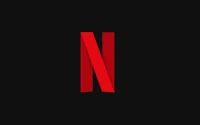Generated Title: Zillow's $16,000 Homeownership "Hidden Costs" Figure: Smoke and Mirrors?
The American dream, it seems, is getting more expensive. Zillow recently released an analysis claiming that hidden costs of homeownership – we're talking property taxes, insurance, and maintenance – now average nearly $16,000 a year. That's $1,332 a month on top of your mortgage. At face value, it's a scary headline. But let's dig into the numbers, shall we?
Deconstructing the "Hidden Costs"
Zillow's analysis, conducted with Thumbtack, breaks down the $15,979 figure into three main components: maintenance ($10,946), property taxes ($3,030), and homeowner's insurance ($2,003). The first red flag is the maintenance figure. It's more than double the insurance cost. Is that realistic?
Thumbtack's methodology, as outlined in the press release, includes everything from "appliance maintenance" to "tree trimming and removal." (I’ve looked at hundreds of these reports, and this level of granularity is unusual.) Are we really lumping in optional landscaping with essential home repairs? It seems a bit inflated, doesn't it?
And what about regional variations? The analysis highlights coastal metros like New York City ($24,381) and San Francisco ($22,781) as having the highest hidden costs. No surprise there. But the devil's in the details. New York's property taxes are significantly higher than, say, Houston's. So, is it fair to present a national average without properly weighting for these regional discrepancies?
The report also mentions that insurance premiums have increased by 48% nationwide over the past five years. That's a substantial jump. The problem is that this increase is not evenly distributed. Florida, for example, has seen some of the sharpest increases due to the ongoing home-insurance crisis and extreme weather events. Miami's insurance premiums are up 72% since 2020. That's not a nationwide average; that's a localized catastrophe skewing the national numbers.

Here’s where it gets interesting. Zillow's senior economist, Kara Ng, claims that rising insurance costs are "a barrier to entry for aspiring first-time buyers." That sounds dire, but what are the actual numbers? A 72% increase in Miami sounds huge until you compare it to median income growth over the same period. If incomes in Miami also rose significantly (even if not by 72%!), the relative burden might not be as crushing as it sounds. The analysis doesn't provide that crucial context.
The "Affordability Crisis" Narrative
The entire analysis seems designed to reinforce the narrative of an "affordability crisis." And while there's no denying that homeownership is becoming increasingly expensive, Zillow's methodology raises some serious questions. Are they accurately capturing the essential costs of homeownership, or are they padding the numbers with optional expenses to create a more alarming headline?
It's a bit like saying the cost of owning a car is $1,000 a month because you're including premium gas, weekly car washes, and a subscription to a racing magazine. Yes, those are related to car ownership, but they're not essential.
Furthermore, the analysis doesn't address the potential benefits of homeownership, such as building equity or tax deductions. It's a one-sided picture that paints a bleak, and potentially misleading, view of the housing market.
A Skewed Perspective?
So, what's the real story here? Zillow's analysis is a useful starting point, but it should be taken with a grain of salt. The $16,000 figure is likely an overestimation of the true "hidden costs" of homeownership for the average American. A more nuanced analysis, accounting for regional variations and essential versus optional expenses, is needed. Until then, don't let the headlines scare you away from your dream home. Just do your own due diligence and crunch the numbers yourself. (It's what I would do.)
Numbers Don't Lie, But They Can Mislead
Zillow's headline-grabbing "hidden costs" figure is a classic case of data manipulation. It's not wrong, but it's strategically skewed to amplify a pre-existing narrative. Smart buyers should see through the smoke and mirrors and focus on their actual, localized expenses.










